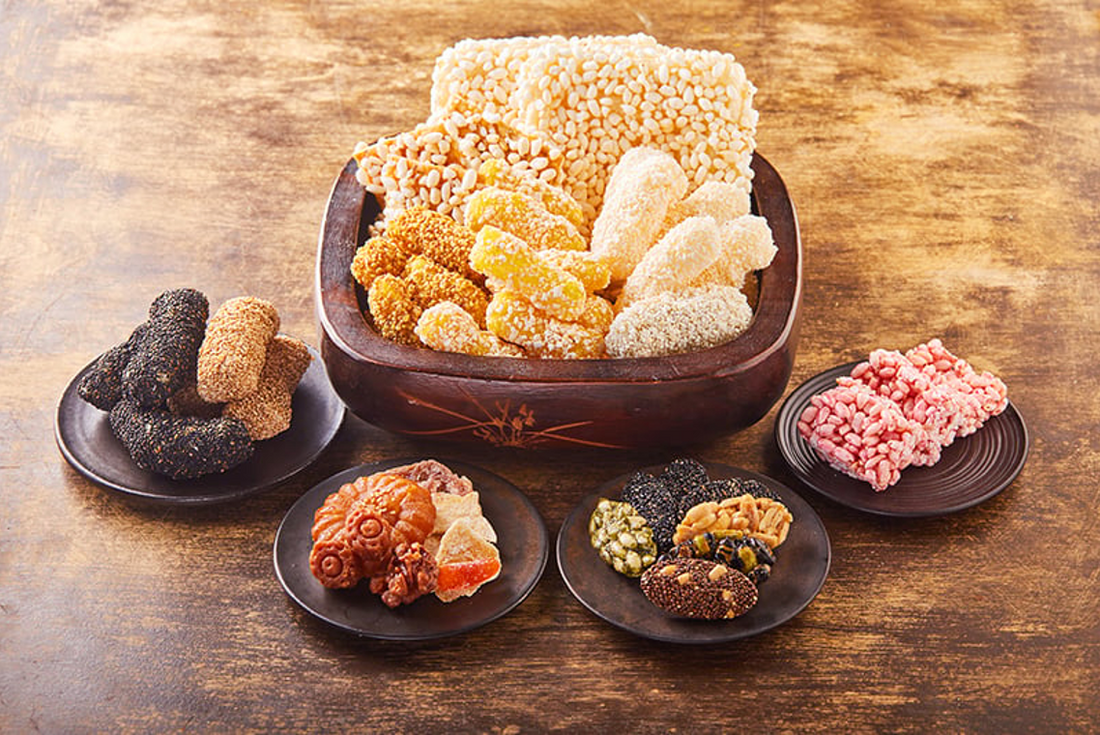
Traditional Korean Snacks: A Taste of History That Lives On Today
Daebak InternsShare
In Korea, food has always been more than sustenance. It reflects history, brings people together, and marks important milestones in life. From simple rice cakes at birthdays to honey cookies once saved for ceremonies, every traditional snack carries a story across generations.What’s fascinating is that many of these flavors, once tied only to special occasions, have found their way into modern cafés, convenience stores, and global snack boxes.
If you’ve ever wondered where today’s wildly creative Korean snack culture draws its inspiration from, the answer lies in these traditional treats. Let’s dive into a few of Korea’s most beloved historical snacks, how they were enjoyed in the past, and why they remain just as delicious and meaningful today.
1. Yakgwa (약과) The Honey Cookie with Royal Roots

Yakgwa is a golden, flower-shaped cookie made from wheat flour, sesame oil, ginger juice, and honey. Its name literally translates to “medicinal confection,” because honey and ginger were once considered medicinal ingredients. In the Goryeo and Joseon dynasties, yakgwa was a luxury item, prepared for weddings, ancestral rites, and royal banquets.
Why so special? At the time, honey was expensive and not something everyday people could afford. Eating yakgwa was a privilege, and gifting it was a sign of great respect. Over time, the cookie became closely tied to hospitality and celebration.
Fast forward to today: yakgwa has enjoyed a revival. Once seen as an “old-fashioned” snack, it’s now trendy again thanks to cafés giving it a modern twist, pairing it with ice cream, matcha, or even espresso. If you walk into a Korean bakery today, you might see yakgwa packaged in sleek gift boxes for holidays like Chuseok or Lunar New Year.
2. Dasik (다식) The Elegant Tea Cookies of the Noble Class

Dasik, meaning “tea food,” are small, pressed cookies, which were traditionally served with tea in noble households. They are made from rice flour, chestnut powder, sesame seeds, or beans, mixed with honey, and pressed into wooden molds that imprint floral or geometric designs. These delicate patterns were just as important as the flavor, since dasik were meant to be enjoyed slowly with tea and admired for their beauty.
Historically, dasik symbolized refinement and social status. They were especially popular among the yangban (scholarly elite) during the Joseon dynasty, where serving them showed not just wealth but also cultural sophistication.
Today, you can still find dasik in traditional tea houses around Seoul and Jeonju, where they pair perfectly with green tea or barley tea. They may not be as common in everyday life anymore, but they remain a reminder of Korea’s long-standing tea culture, and their elegant shapes make them a favorite souvenir for visitors.
3. Tteok (떡) Rice Cakes for Every Milestone
No snack represents Korean tradition more than tteok, the wide variety of rice cakes made by steaming or pounding glutinous rice. Tteok comes in many forms, colorful layered rice cakes, chewy white injeolmi coated in soybean powder, or songpyeon (half-moon rice cakes) filled with sweet sesame or red bean paste, especially eaten during Chuseok.
 Historically, tteok wasn’t just food; it was ritual. Families prepared specific rice cakes for major life events: baekseolgi (wh
Historically, tteok wasn’t just food; it was ritual. Families prepared specific rice cakes for major life events: baekseolgi (white rice cake) for a baby’s 100th day celebration, red-and-green colored varieties for weddings, and songpyeon for harvest festivals. Preparing and sharing tteok was a way of reinforcing community bonds, wishing good fortune, and marking fresh starts. Even now, no major Korean celebration feels complete without rice cakes on the table.. While you can buy it year-round in traditional markets, many cafés now give it a modern spin, pairing chewy injeolmi with lattes or turning tteok into ice cream toppings.
4. Hangwa (한과) Korea’s Festive Sweets
If you’ve ever seen a Korean holiday table, you’ve likely noticed a colorful display of hangwa (한과), a general term for traditional Korean confections. These include yugwa (유과, puffed rice treats), gangjeong (강정, crispy grain clusters), and jeonggwa (정과, candied fruits/roots). Hangwa was often served during weddings, ancestral ceremonies, or New Year’s celebrations, symbolizing sweetness and abundance.

What makes hangwa stand out is its craftsmanship. Each piece is handmade, often in decorative shapes, and presented as much for beauty as for flavor. They carry an air of festivity, reminding Koreans of family gatherings and cultural heritage.
Today, hangwa is making a comeback in stylish packaging, sold in department stores as premium gifts. The rustic sweetness of rice, honey, and nuts feels timeless and connects generations through taste.
From Palaces to Snack Boxes: Tradition Meets Today
What’s striking about these historical snacks is how adaptable they’ve proven to be. Recipes that once belonged to palaces or ceremonies are now being reimagined in modern kitchens. Yakgwa appears in ice cream shops, tteok finds its way into bingsu (shaved ice desserts), and hangwa shows up in luxury gift boxes.
Even Korea’s modern snack boom think honey butter chips or green tea KitKats often draw inspiration from these age-old ingredients. Flavors like sesame, red bean, chestnut, and honey remain timeless favorites, constantly reintroduced to younger generations in fresh formats.
For a taste of this blend of old and new, Daebak offers special snack boxes that feature a curated selection of Korean snacks, sauces, and instant meals. For example, the CJ is Daebak box includes products that modernize traditional flavors while still reflecting their cultural roots.
Final Bite
Korean snack culture didn’t appear overnight; it was built on a foundation of traditional flavors, shared rituals, and festive foods that carried meaning far beyond taste. From yakgwa’s honeyed sweetness to the celebratory rice cakes of tteok, each snack tells a story of Korean life.
And the best part? These aren’t relics of the past. They’re still here, evolving, delighting, and connecting generations. With Daebak snack boxes, which deliver a variety of authentic Korean treats to your door, you don’t have to fly to Seoul to experience this history; you can unwrap it in your living room, one snack at a time.
Whether it’s traditional hangwa or something new like the YOUUS is Daebak box, which is filled with convenience-store favorites, you’re tasting Korea, one snack at a time.

